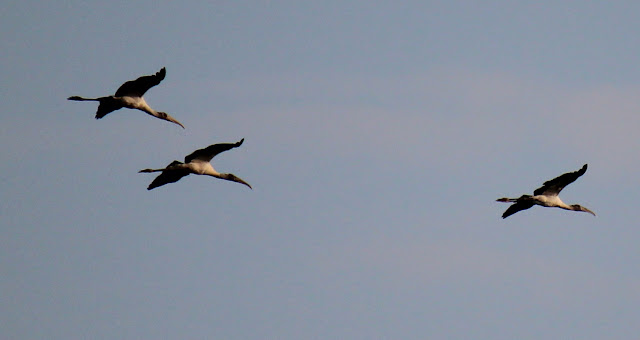Bastille Day With The Swamp Coyotes
Quoi ! des cohortes étrangères Feraient la loi dans nos foyers ! Quoi ! Ces phalanges mercenaires –La Marseillaise
What! Foreign cohorts Would make the law in our homes! What! These mercenary phalanxes….is the English translation of La Marseillaise the French National Anthem. Fitting that those words describe how the coyotes of the swamp feel surrounded by so many foreign birds from afar. The gawks, squawks and howls of the birds sounding alarm seemed to interest and somewhat annoy the curious coyotes crossing a few hundred yards of open water.
The sultry steam of a Texas mid-July morning is felt as soon as the sun clears the trees of the Great Trinity Forest. In the sawgrass flats that surround the swamps, the heat beats down in a merciless manner even at 7am.
 |
| Coyotes wading across drying lake in Great Trinity Forest July 14, 2012 |
Many people think that coyotes are a nocturnal animal. That simply is not true. In places where humans rarely venture, coyotes are often out in the daytime. The trick is being able to see them. Tough to do among the high grass and dense triple canopy foliage that rings Lemmon Lake. The coyote photos were taken around 9am with the coyotes moving southwest to northeast across the shallow lake.
 |
| Coyotes, Black necked stilts, Great Blue Herons, White Ibis and Egrets |
Lemmon Lake is in a transformation at the moment. Changing from a lake to a shallow wading body of water fairly rapidly. Over the next few weeks the lake will probably go completely dry, just like it did last summer. It creates a feast for wading birds and a death sentence for the fish and shellfish that moved into the lake during winter flooding. It’s a natural cycle. One that repeats itself yearly. The lake is a precious resource for the wildlife down there. One that often creates strange relationships as seen in the photo above.
 |
| Roseate Spoonbill July 14, 2012 |
The original purpose of this visit was to fulfill a promise I made last winter to show a couple guys some Wood Storks and Roseate Spoonbills. We luckily saw both those birds within the first ten minutes of our visit.
I get a lot of enjoyment seeing others witnessing this stuff unfold in front of them. It’s a special kind of something that happens down there when adding friends to the mix that increases the experience.
Wood Storks and Roseate Spoonbills are a rare sight in Dallas. I’m not sure there are even any at the zoo. To see them with the sunrise cracking over the horizon is a special sight and one I wish more people could see for themselves. The problem is though, how do you balance something so obscure, remote and unique without ruining it. In the past week I have seen people going to silly lengths to photograph the birds here, ones that scare the birds away and ruin the experience for others.
I have been photographing the birds here at Lemmon Lake for a few years now. It’s an interesting experience to see the same Roseate Spoonbills come back to the same lake and same roosting trees year after year.
I went through my old photos and compared the 5-6 Spoonbills that spend time at Lemmon Lake with the current 2012 Spoonbills. I can identify 3 of the same individuals from years past in 2012. Migrating from Mexico and Central America to spend time at Lemmon Lake year after year is really cool. It would be fascinating to see what part of the world these birds spend the rest of the year.
I feel responsible for others spooking and scaring them off since without my mentioning the birds or the lake, I don’t think anyone would venture there. I have learned this week that some folks cannot see the forest through the trees and will go to whatever lengths it takes to get a photo. I’d like to see the birds come back next year and years to come. I’m not a birder, environmentalist or some kind of green advocate. Far from it. But I do recognize something really special when I see it.
 |
| Wood Storks In Flight Over Lemmon Lake July 14th |
 |
| Roseate Spoonbill |

